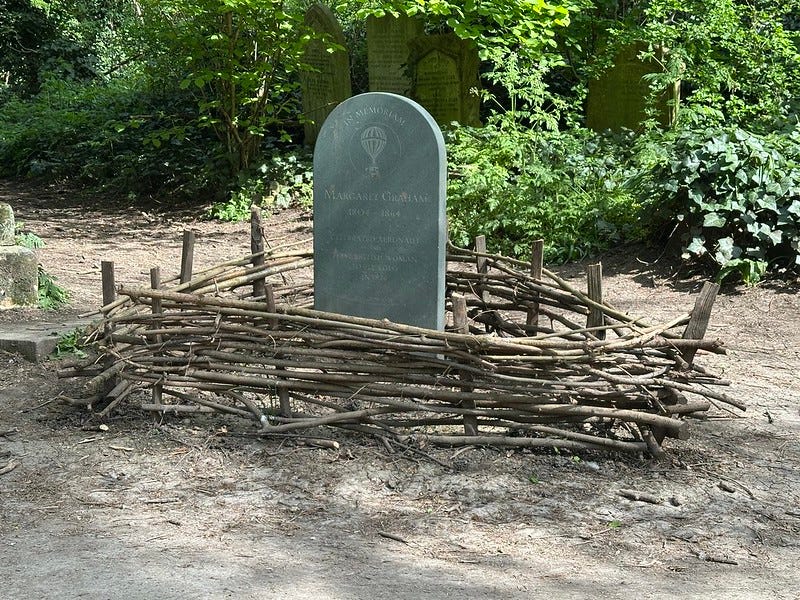Welcome to Londonist: Time Machine, the newsletter about London history.
I was sucked in by the wicker work.
This gravestone, in Abney Park Cemetery, Stoke Newington, is not like the others. It stands in isolation, protruding from a wicker basket. Why?
Closer inspection reveals all. This is the grave of somebody who spent a good deal of time in baskets. …





